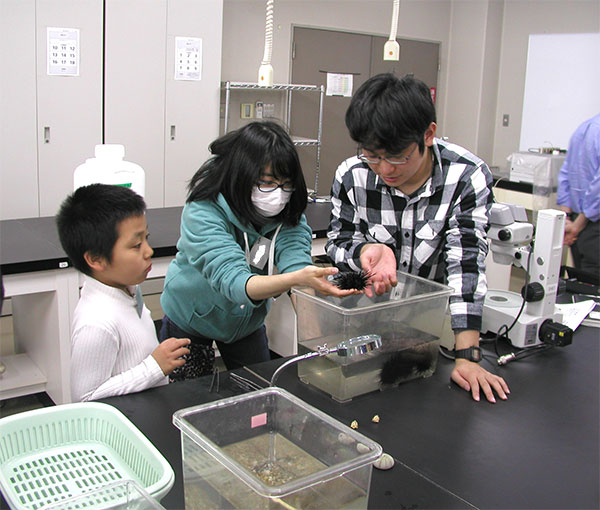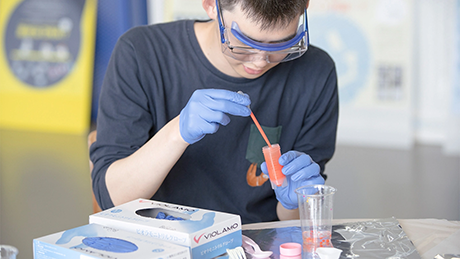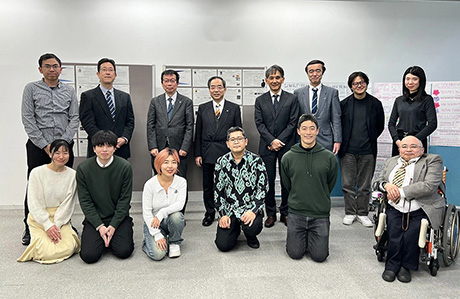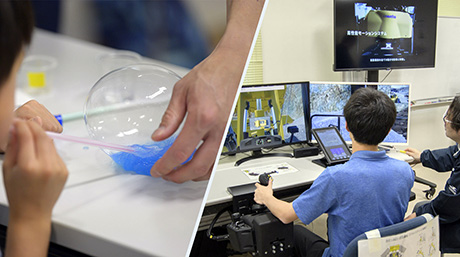Life Science and Technology News
Public Science Class — The wonderful world of echinoderms 2018
Spring break meant it was time to explore "The wonderful world of echinoderms 2018" in Tokyo Tech's Fundamental Biology Science Class for middle and high school students. Held on Ookayama Campus on March 28 by the School of Life Science and Technology for the third time, the class was again supported by the Tokyo Tech Fund.

Participants getting to know a sea urchin
Echinoderms (from Ancient Greek echinos meaning "hedgehog" and derma meaning "skin") are marine animals such as sea urchins, starfish, and sea cucumbers, which have a fivefold radial symmetry. Despite their exotic appearance, they are considered some of the closest relatives to humans among invertebrates. This year's class participants got a close-up view of how these weird yet wonderful creatures are designed.
- Starfish and sea urchins righting
Students examined if there were any patterns to how Patiria pectinifera — starfish found along the coasts of Japan, China, and Russia in the Pacific Ocean — and Heliocidaris crassispina, or Japanese sea urchins, right themselves after becoming overturned. - The intricate tube feet of sea cucumbers
Participants also observed the tube feet and tentacles of Holothuria leucospilota, commonly known as black sea cucumbers, and learned how these appendages make up a unique water vascular system that allows echinoderms to move, feed, breathe, and excrete waste. - Aristotle's lantern and the sea urchin's ‘shell’
Sea urchins have a mineral-rich ‘shell’, known as a test, which functions like a skeleton and is left behind when the animal dies. These animals also have a masticatory apparatus called an Aristotle's lantern, which allows the creature to feed and "chew." Students examined and confirmed the pentaradial symmetry of both of these body parts. - Pedicellariae: The last line of defense
Pedicellariae are unique pincerlike organs found in some echinoderms. The sea urchin's pincers are three jaws, or valves, that help keep its body surface clear of algae and other debris. By stimulating and viewing them under a microscope, students observed the reflex response of these valves.
Overall, the session provided participants with an interactive way to learn about the unique systems and organs utilized by echinoderms to survive in marine ecosystems, and to consider their geological importance through fossils and other specimens.
Organizers of the Fundamental Biology Science Class look forward to providing more learning opportunities to the public — particularly for elementary, middle, and high school students.
This project is supported by Tokyo Tech Fund
School of Life Science and Technology
—Unravel the Complex and Diverse Phenomena of Life—
Information on School of Life Science and Technology inaugurated in April 2016
Contact
Fundamental Biology, School of Life Science and Technology







